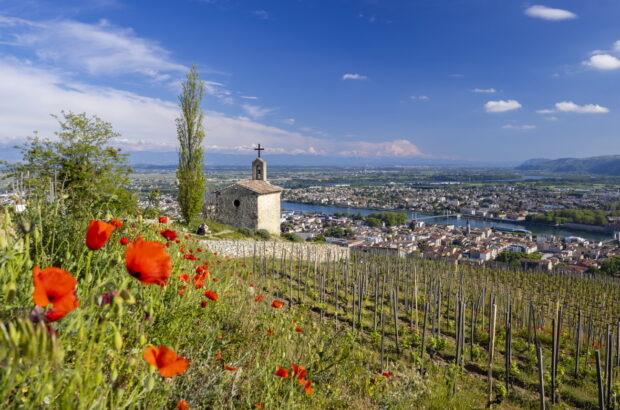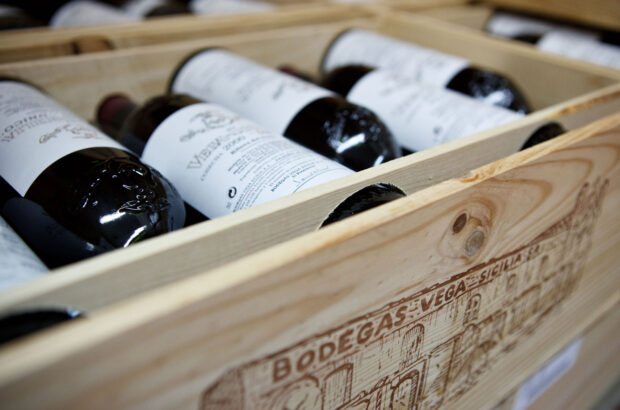Could this be wine’s most alluring idea? It might be. Three books (two published recently) allude to its magnetic appeal, though every Decanter reader will already be aware of it. That idea is the soil signature: the notion that the sensual profile of a wine might derive from the rocks and soils which characterise its vineyard(s) of origin.
Decanter Rhône correspondent Matt Walls’ excellent Wines of the Rhône (£35, Infinite Ideas, January 2021) is a sure-handed guide to France’s friendliest and most accessible fine-wine region. If you have the book, take a look at page 5, where Walls runs briefly through the styles of Rhône wine he feels typify granite, schist, rolled pebbles, clay, sand and limestone soils. If you want to see this idea explored at much greater length via just one soil type, look out for John Szabo’s Volcanic Wines (Jacqui Small, 2016).
The third book is Pedro Parra’s semi-autobiographical Terroir Footprints (Crescent Hill Books, October 2020). As well as being an international ‘terroir consultant’, Parra is a wine producer in his own right, in Itata in his native Chile. He’s also a unique thinker and taster who hunts down vineyard soils capable of delivering ‘elegance, freshness and minerality’ and ‘of minimising exuberance in pursuit of tension, complexity and austerity’ – though that doesn’t, of course, mean homogeneity.
Parra is a firm believer in soil signatures; indeed he goes so far as to say that the signature ‘always prevails above human intervention or techniques’. He is also blisteringly honest about his own experiences, failures and setbacks – yet at the same time very sure of the all-important relationship between what he tastes in certain wines and what he finds in their vineyard soil pits.
The reader must take this on trust; he admits that, despite his scientific training, he works intuitively. It makes Parra’s endeavours closer to performance art – a virtuoso interaction with the natural world and with fermentative craft – than to classical soil science.
The book’s an exciting torrent (though the first edition has been sloppily translated – a better version is on the way). One of Parra’s core beliefs is that the presence of rock in soils is vital for flavour interest – or rather ‘the sensation in the mouth that comes from the terroir’ (he is dismissive of aroma, by the way, since it ‘can easily be manipulated by man’). ‘I can assure you that the moment we lose the rock… and go over to a deep soil, we lose the quality we are looking for.’
Parra is compelling on clays (‘clays are structure’), while pointing out that poor clays give dismal results while small quantities of the best clays can be sublime. Granite wines ‘usually lack mid-palate’ – but if the vines are based on large-crystal parent rock in an advanced state of decomposition which enables deep root penetration (always a good thing for Parra), then they can make ‘great terroir’.
Limestone is his ‘favourite geology’ and produces his ‘favourite wines’, though he notes that the ‘calcarean energy’ varies depending on site, the main point of similarity being the ‘brother tannins’ of wines grown on limestone, ‘which are more powerful than the variety to me’. (He considers the importance of variety overstated in general.)
Schist produces ‘loud music’, which needs ‘fine tuning’; basalt can be ‘a magical terroir… in its rocky state’ – the problem is that it easily weathers to deep soil.
Parra’s is a book full of fascinating insights. I took copious notes as I read.
Yet… get together with friends, set up a comprehensive, multi-region blind tasting based on soil type, and you’ll still find guessing the soil signature difficult. I’ve tried, and been frustrated, on half a dozen occasions.
Regional climate impacts take first place – but even within multi-signature, single-climate zones (such as Alsace or Roussillon) it’s hard to ‘taste soil’ clearly. The matrices change ceaselessly; winemaking isn’t always soil-limpid.
Soil signatures may provide wine’s most haunting music – but it’s quiet, and you have to listen very intently indeed.
In my glass this month:
While in London this month for Decanter World Wine Awards judging, I helped old friends celebrate their 30th wedding anniversary with treasures from their Aladdin’s Cave cellar. The 1991 vintage was much finer in California than in France – so we revelled in the gracious warmth of the Ridge, Santa Cruz Mountains Cabernet 1991 and the structured depths of Joseph Phelps, Insignia 1991. Not so much soil signatures as time signatures: the pulse in wine’s music.







